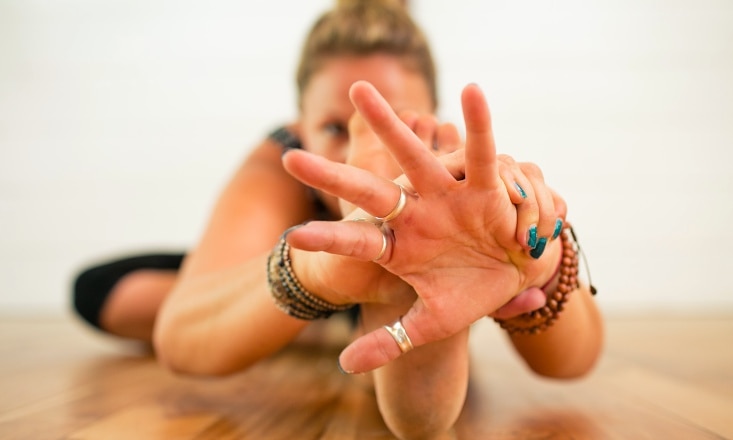Practice is called practice for a reason. It is different, everyday. Over the years it matures as we watch the consistent ebb and flow of progress and plateau.
Yet, I’ve noticed a distinct trend among students lately who want to attempt more ‘advance’ postures that they’re not entirely ready for. While its great to play with new poses it shouldn’t be at the expense of retaining your zen. After all,
The longer we practice, the more refined yoga and what it means to us becomes, both on and off the mat.~Kat Smith
Far from feeling limited by our flexibility or pre-occupied over how to place our arms and legs, something altogether more subtle begins to bubble beneath the surface.
Yoga Practice in Cycles
Donna Fahri says that practice runs in cycles that serve a purpose and deserve to be listened to.
‘Throughout our lives, we cycle through times of expansion, times of contraction and times of being suspended in pause where we are assimilating and integrating our experience. These rhythmic changes are as natural to us as is our breath.
As the internal metronome of rhythm, our breath mirrors this life process of taking in and absorbing, letting go and relinquishing, and resting in the moments in between. When we suppress any one of the rhythms in our yoga practice, our time on the mat will serve to freeze our way of being rather than afford us a way of adapting and changing in the response to our deepest needs.’
The truth is being ‘advance’ is all in the approach and attitude to practice. It shouldn’t be something we strive for, but rather something that arises organically from awareness and the right type of effort. So if you wish to ‘advance’ your yoga practice effortlessly I recommend you cultivate these qualities.
Breathe properly.
Never compromise the breath for a posture. Keep it slow and deep and long, with focused awareness.
Look for effortlessness in your flow.
Keep it light. Seek the still point between effort and surrender. Activate and engage the body so you’re able to settle in to a posture with alertness and ease. Cultivate gentle awareness, remove thumping from your jumping, take the momentum out of your movement and let go.
Slow it down.
Self-enquiry begins when we begin to practice more slowly. If you’re used to moving at a certain pace consider taking it down a notch or two, so you can really tune into all the little detailed mechanics of your body and observe your mind.
Consider how your movement is affected by your breath, what happens to your inner arches when you activate your big toe base, the different between closing your eyes and keeping Dristi, where your mind wanders after the second breath… all of these things and more will teach you more than any arm balance could.
Check your attitude and practice acceptance.
If you’re still attacking your yoga practice its time for something to change. Switch to seeking a softening for a more surrendering practice that is focused on acceptance rather than achievement.
Commit to a self-practice
Self-practice will add a different dimension to how you practice and what is offered in return. Moving with the rhythm of your own body can be very revealing and stilling.
Clean up your act
Consider what you’re doing off the mat. How you treat your body, how you eat, how you spend your time. Declutter and detoxify.
Respect your limits
Respect your practice wherever you are, however you feel limited. Let your practice mature as you grow into it. After all it’s the journey not the destination that counts the most.
Wherever you are in practice, remember that; practice and all is coming.


